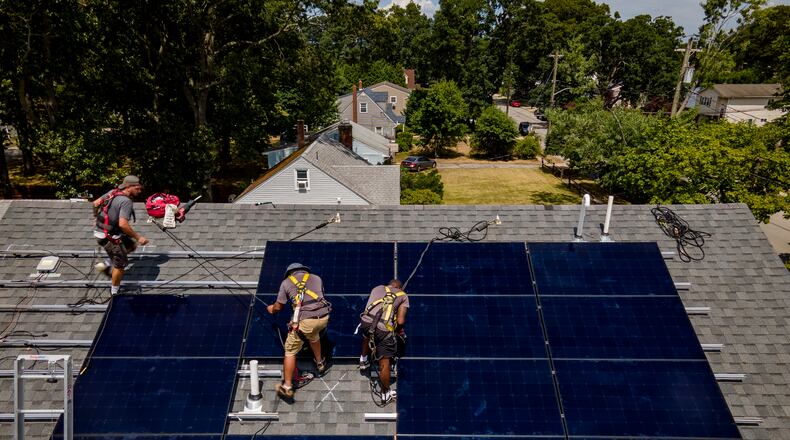Using solar panels will help reduce the strain on the existing electrical grid and greenhouse gases emitted from power plants, according to a Sept. 1 report from city planner Dan Boron to council.
“We just wanted to reduce the red tape from the ordinance,” City Manager Chris Pozzuto previously said.
In his report, Boron said the former regulations date to 2012; at that time such systems were prohibited or severely regulated (in the case of the historic district) in the city. Boron said prior to council’s passage on Sept. 15, that the former ordinance “is among the most restrictive solar energy system ordinances in the region.”
He said city officials are working on the new rules and design standards which will be used when the new ordinance takes effect on Oct. 15. The amendments are primarily focused on building-mounted solar energy systems.
In his report, Boron said, the new “amendments will continue to uphold the city’s aesthetic standards, while balancing that goal with the need to provide residents with more flexibility to install these systems on their property in light of the orientation of buildings to street fronts, sunlight, roof design, and tree coverage.”
He said the amendments, “would also reduce the regulatory review time for solar energy systems and eliminate a fee associated with their review.”
However, the regulation of solar energy systems in the historic district will remain unchanged.
The Springboro Planning Commission recommended approval of this amendment to City Council at its July 13 meeting.
Solar Energy Industries Association, a national trade association, said on its website that Ohio has enough solar installed to power 107,207 homes, and ranks 25th in the nation through the second quarter of 2022, dropping seven spots from 2021.
The organization said the solar power accounts for 0.91% of the total electricity generated in the state. There are currently 12,103 installations in the state, according to the SEIA website. The organization said the price has declined 53% over the past 10 years.
One installer, Icon Solar of Milford, said they have been busy with solar panel installations, including in Springboro and Warren County.
Sherry Anderson, marketing director for Icon Solar, said the size of the solar panels depend on the amount of electricity being used by the client. She said it takes time for clients to install solar panels because of the lengthy permitting process in some communities.
Anderson said the average cost for an installation is between $25,000 to $30,000. Clients can offset the costs with a one-time 30% federal tax credit.
Anderson said crews can install the solar panels in a day.
Albert McNichol of Springboro said his solar panels from a different company were installed in June but were not turned on until July.
His wife saw an advertisement and contacted the company. McNichol said the company took care of the permitting process, which took about two months. After the homeowner’s association signed off, the company installed 16 solar panels for his home. He said it took the contractor about four hours to install the panels. McNichol said the cost was about $35,000.
Starting up his solar power system took some time, as he was not aware he had to contact Duke Energy and was required to get a final inspection.
“It’s a pretty good deal,” he said.
About the Author

